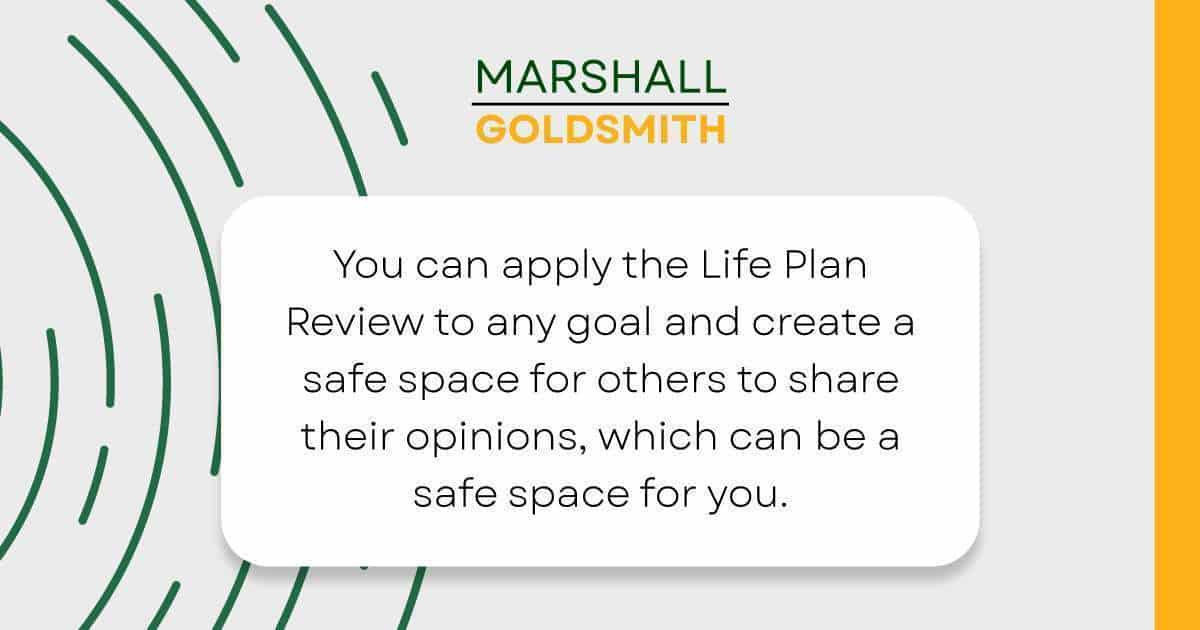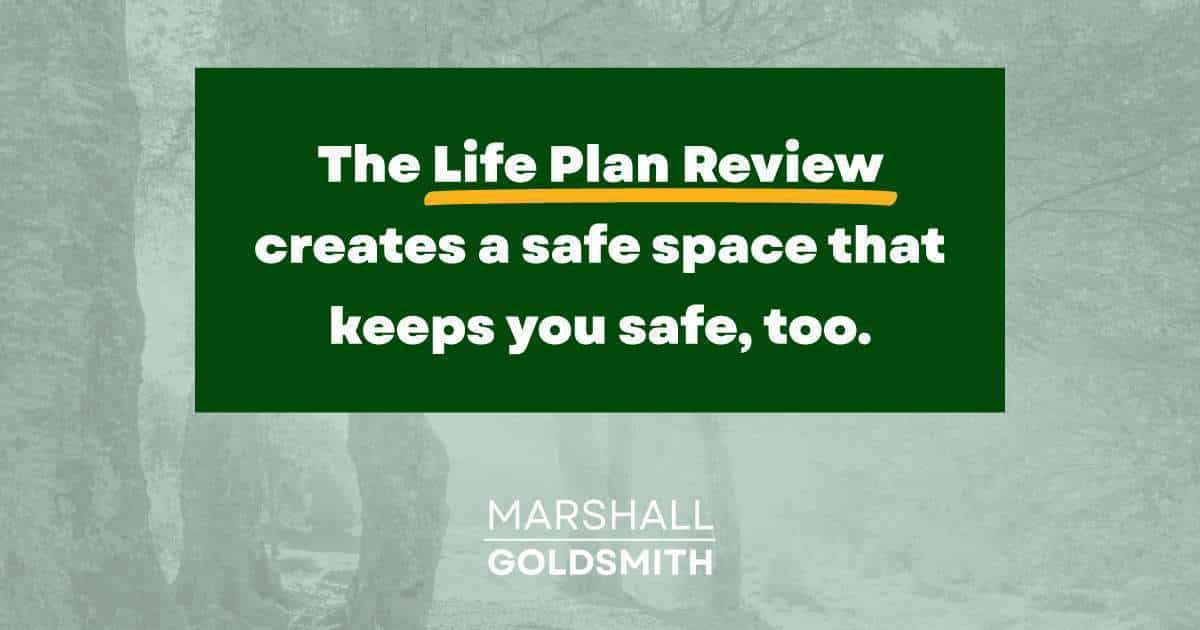Playing Favorites By Marshall Goldsmith There’s a reason I devote...
I created the Life Plan Review (LPR) to close the gap between what you plan to do in your life and what you actually get done.
The LPR consists of four steps — weekly meetings where you answer fixed questions with a partner to improve your life, self-monitoring between weekly meetings, a weekly plan review based on its relevance and your personal need, and the importance of not doing it alone.
When using the LPR, you will notice it provides other benefits. These include applying it to any goal and creating a safe space for others to share their opinions, which can be a safe space for you.
When the former Boeing and Ford CEO Alan Mulally, and his wife Nicki, were raising their five children in Seattle, he adapted the Business Plan Review he was using with his team at Boeing into a Family Plan Review at home. On Sunday mornings, he and Nicki and the five kids would show up with their calendars and review what each needed to do and the support they required to get through the week.
It was how Alan balanced the five areas in his life—professional, personal, family, spiritual, and recreational—that mattered to him. He’d review his calendar daily, always checking to make sure he was doing what he wanted to do and making a positive difference in one of those five areas. If he saw things getting out of balance, he’d make a midcourse correction and change his calendar. It was also how the family never lost touch with one another.
The LPR need not be restricted only to achieving an earned life in the grandest sense. You can apply it to any goal, big or small. For example, let’s say you decide you want to do something about the environment instead of talking about it all the time. What’s stopping you from finding a half dozen environmentally like-minded people, establishing personal goals, and reviewing them each week in a group setting? You’re adapting the LPR process into an EPR, your very own Environmental Plan Review. The objective may be narrower and more focused, but the challenge is no less severe. Each week you and the other members have to square off against the bare-knuckled question, “What did I do this week to help save the planet?” In effect, you’re determining if you’ve earned the week or lost it.

The application of the LPR process to any professional or personal challenge is limited only by your imagination and your resourcefulness in recruiting people to join you.
The LPR creates a safe space that keeps you safe, too.
Participants instantly welcome and comply with the no-cynicism, no-judgment atmosphere of an LPR meeting, with one exception: when they talk about themselves. Somehow group members think they’re exempt from the safe space rules in the LPR if their negativity is not directed at others. Of the 60 sessions I led in our first LPR “season,” I can’t recall one in which I didn’t have to interrupt one or two participants in the middle of a harsh self-judgment of their past behavior.
Usually it’s a casual confession about a supposed deficiency (“I’m not good at…”). I’d urgently wave my arms, saying, “Stop, stop, stop!” Then I’d make them raise their hand, say their name, and repeat after me: “Although I’ve been bad at X in the past, that was a previous me. I do not have an incurable genetic defect that prevents me from changing for the better.” They usually get the message the first time they’re busted:
A safe space is for everyone, including the people we have been.

Adding Too Much Value Won’t Get You There By Marshall...
C-Suite Master Class: No, But, However By Marshall Goldsmith Continuing...
The Doerr Institute: Expanding the Market for Coaches By Marshall...
Making Leadership Development Part of the College Degree at Rice...
Sanyin Siang – Winner of the Thinkers50 Marshall Goldsmith Coaching...
Thinkers50 Marshall Goldsmith Distinguished Achievement Award in Coaching – Nominees...
Leading with Influence: What Is Influence360°? By Marshall Goldsmith Founder...
Are You a Dominator, Manipulator, Persuader or Influencer? By Marshall...
Leading with Influence: Redefining Modern Influence Part 2 By Marshall...
My mission is simple. I want to help successful people achieve positive, lasting change and behavior; for themselves, their people, and their teams. I want to help you make your life a little better. With four decades of experience helping top CEOs and executives overcome limiting beliefs and behaviors to achieve greater success, I don’t do this for fame and accolades. I do this because I love helping people!
As an executive educator and coach, I help people understand how our beliefs and the environments we operate in can trigger negative behaviors. Through simple and practical advice, I help people achieve and sustain positive behavioral change.